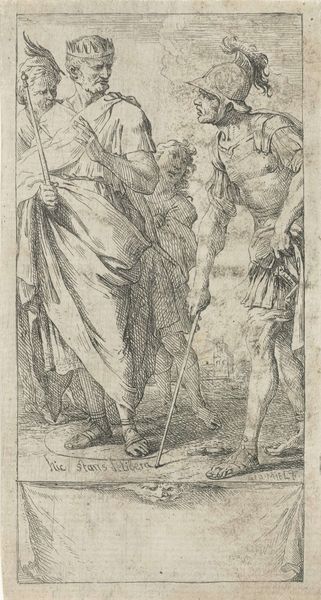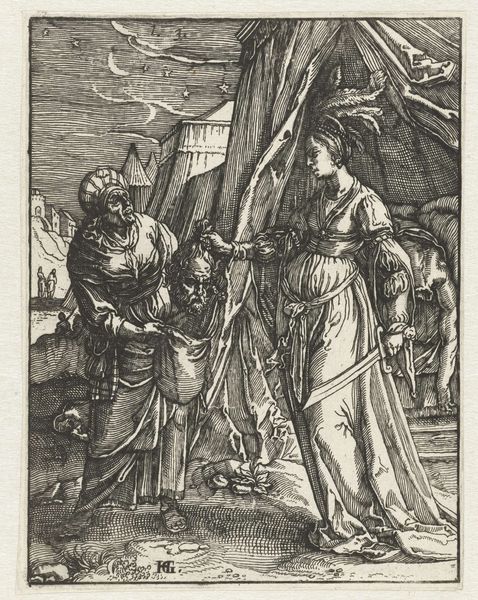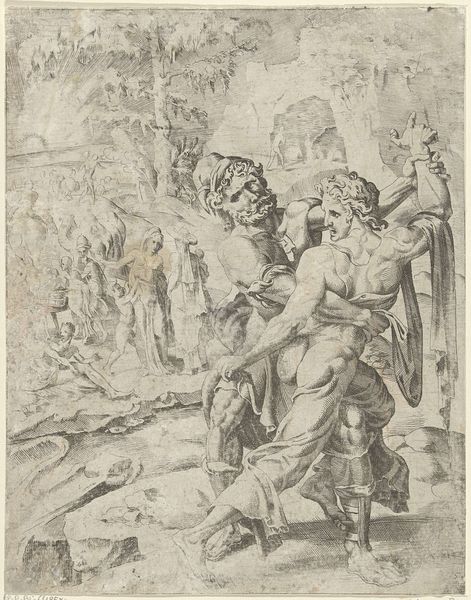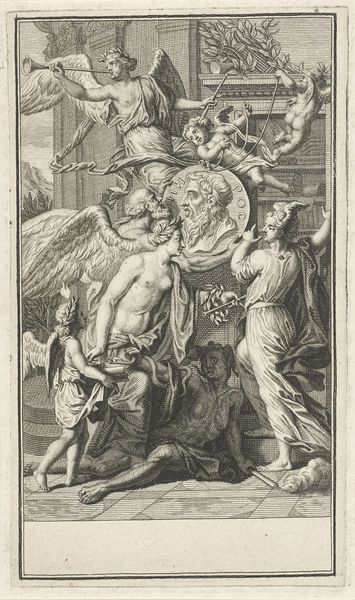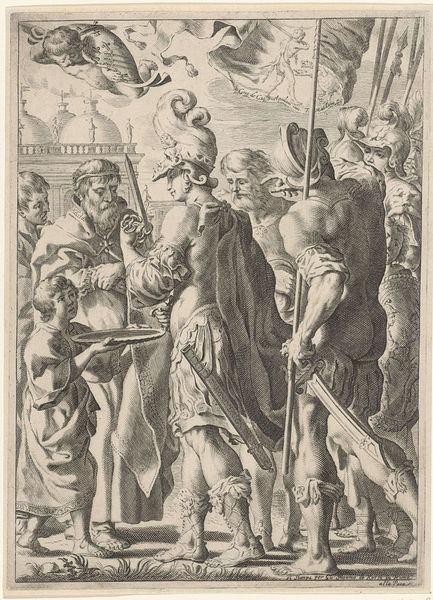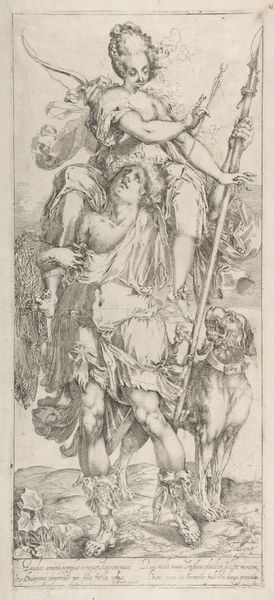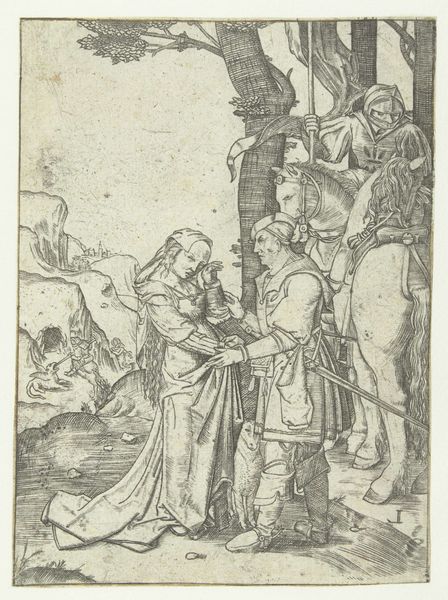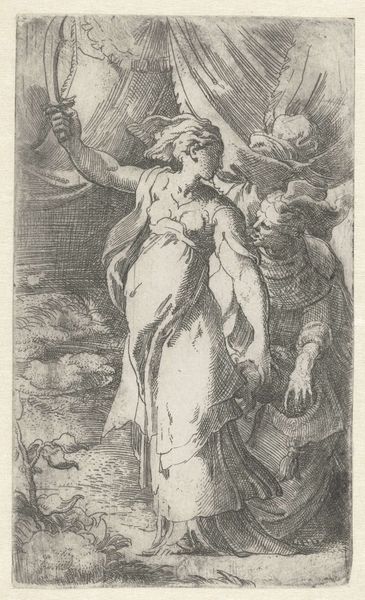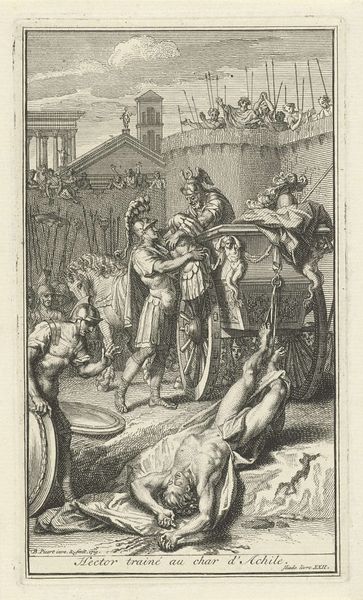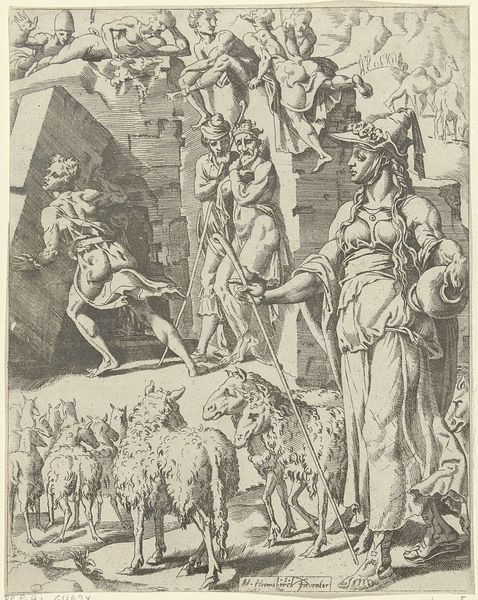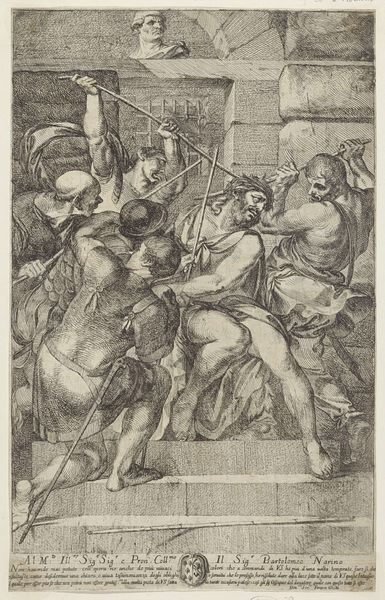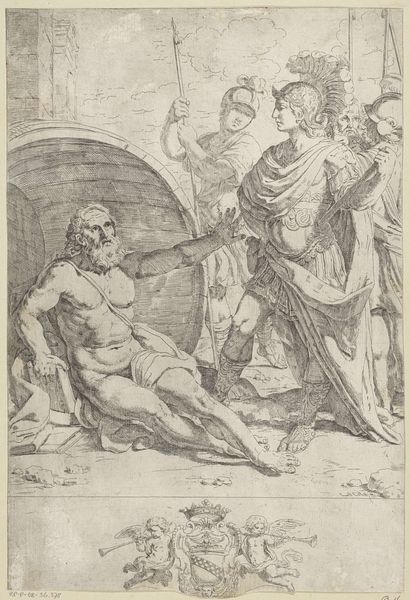
print, etching, engraving
#
baroque
# print
#
etching
#
old engraving style
#
figuration
#
line
#
history-painting
#
engraving
Dimensions: height 128 mm, width 76 mm
Copyright: Rijks Museum: Open Domain
Editor: So, this is Jan Miel’s engraving, "Popilius Laenas tekent een cirkel," dating from sometime between 1633 and 1664. It's currently at the Rijksmuseum. I'm struck by the dramatic tension created by the contrast between the figures. What story do you see unfolding here? Curator: It's fascinating to consider this image within the context of political power and Roman history. The etching depicts the Roman envoy Popilius Laenas facing Antiochus Epiphanes. See how Popilius draws a circle around the king and demands an answer before he steps out of it. How does that image speak to you, thinking about displays of power and authority? Editor: I guess the immediate power dynamic is quite obvious but there is a moral question being raised as to the fairness and possible hypocrisy? Curator: Precisely! It serves as a visual representation of Roman authority asserting itself in international relations. It underscores the cultural importance of symbolic acts of domination, of the type that were understood even within educated circles. Miel produced other works about similar stories. Do you see any similarity? Editor: Yes I do, many baroque era paintings cover themes of conquests. This is a more subtle way of showing Roman dominion than battle scenes or something obvious. Would the general public at the time have been very familiar with the specifics of this story? Curator: Probably! It points to how classical narratives were circulated, visualized, and used to reinforce specific notions of state power. And the use of print allowed it to become relatively widespread compared to painting. How has viewing it changed your impression? Editor: I didn't know anything about the figures and it's cool to know there's a whole story captured in the lines. Curator: Exactly! Thinking about prints in relation to power makes the image even richer for me.
Comments
No comments
Be the first to comment and join the conversation on the ultimate creative platform.
